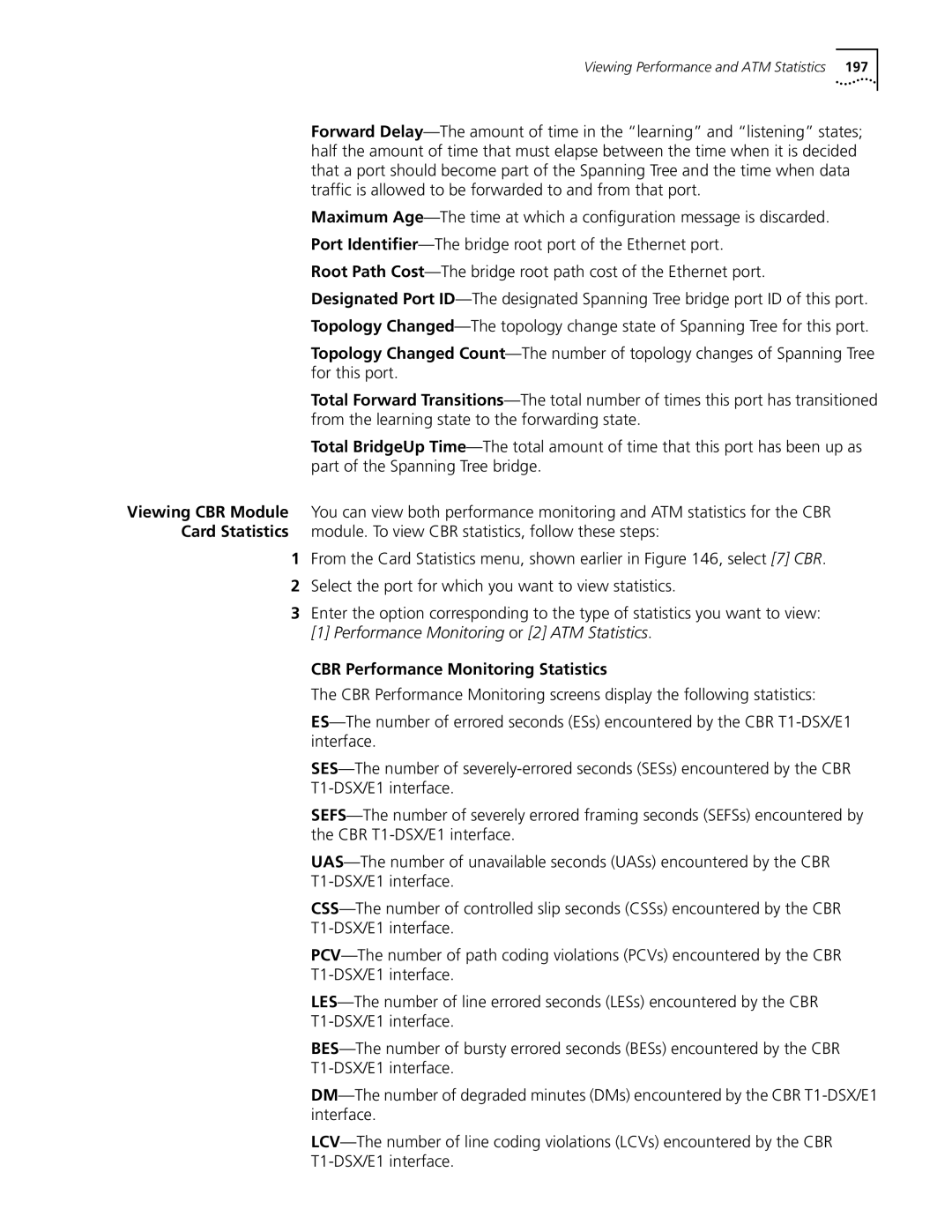Viewing Performance and ATM Statistics 197
Forward Delay—The amount of time in the “learning” and “listening” states; half the amount of time that must elapse between the time when it is decided that a port should become part of the Spanning Tree and the time when data traffic is allowed to be forwarded to and from that port.
Maximum Age—The time at which a configuration message is discarded.
Port Identifier—The bridge root port of the Ethernet port.
Root Path Cost—The bridge root path cost of the Ethernet port.
Designated Port ID—The designated Spanning Tree bridge port ID of this port.
Topology Changed—The topology change state of Spanning Tree for this port.
Topology Changed Count—The number of topology changes of Spanning Tree for this port.
Total Forward Transitions—The total number of times this port has transitioned from the learning state to the forwarding state.
Total BridgeUp Time—The total amount of time that this port has been up as part of the Spanning Tree bridge.
Viewing CBR Module You can view both performance monitoring and ATM statistics for the CBR Card Statistics module. To view CBR statistics, follow these steps:
1From the Card Statistics menu, shown earlier in Figure 146, select [7] CBR.
2Select the port for which you want to view statistics.
3Enter the option corresponding to the type of statistics you want to view: [1] Performance Monitoring or [2] ATM Statistics.
CBR Performance Monitoring Statistics
The CBR Performance Monitoring screens display the following statistics:
ES—The number of errored seconds (ESs) encountered by the CBR T1-DSX/E1 interface.
SES—The number of severely-errored seconds (SESs) encountered by the CBR
T1-DSX/E1 interface.
SEFS—The number of severely errored framing seconds (SEFSs) encountered by the CBR T1-DSX/E1 interface.
UAS—The number of unavailable seconds (UASs) encountered by the CBR
T1-DSX/E1 interface.
CSS—The number of controlled slip seconds (CSSs) encountered by the CBR
T1-DSX/E1 interface.
PCV—The number of path coding violations (PCVs) encountered by the CBR
T1-DSX/E1 interface.
LES—The number of line errored seconds (LESs) encountered by the CBR
T1-DSX/E1 interface.
BES—The number of bursty errored seconds (BESs) encountered by the CBR
T1-DSX/E1 interface.
DM—The number of degraded minutes (DMs) encountered by the CBR T1-DSX/E1 interface.
LCV—The number of line coding violations (LCVs) encountered by the CBR
T1-DSX/E1 interface.
